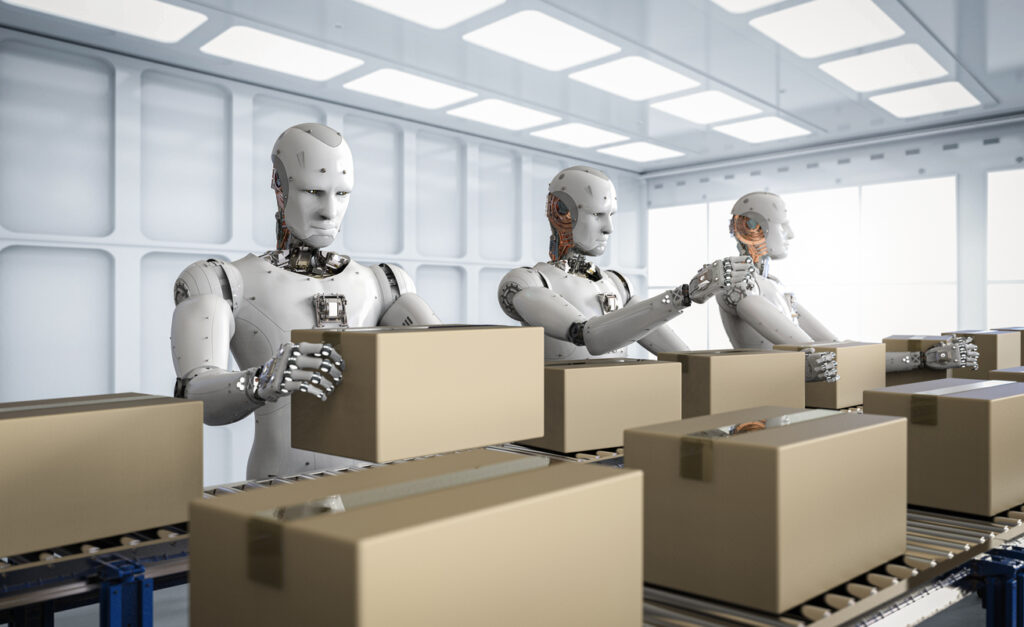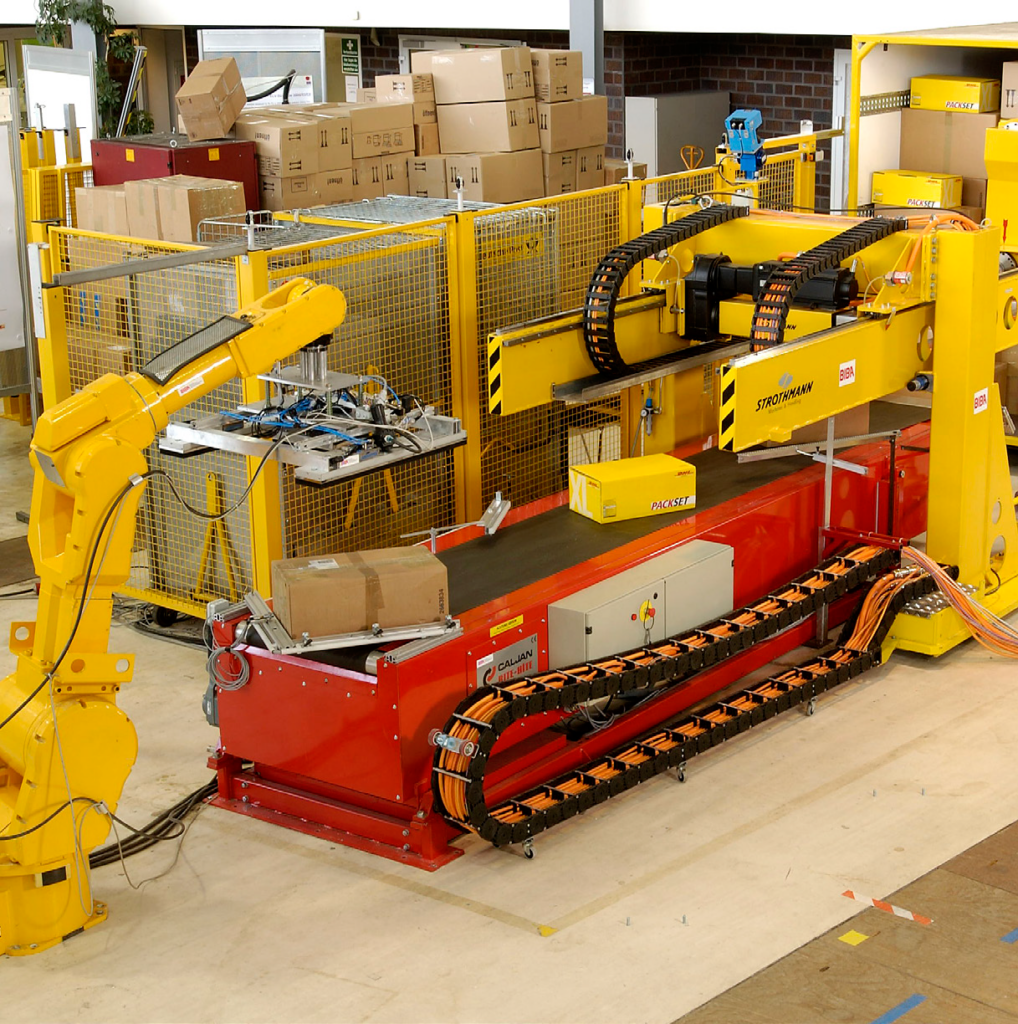While commonplace on the manufacturing side of the supply chain, to date robots have seen limited adoption in the logistics sector. A key reason for slow uptake has been the commercial viability of technology to address the complexities of the challenge – complexities that include handling a wide array of different parts in an almost infinite number of combinations, safety implications of humans and robots collaborating in the same space, and the prohibitive cost of hardware and computing power.
Now, however, the situation is changing and advanced robots are starting to enter our warehouses and sorting centres, even helping with ‘final mile’ delivery to the end customer. DHL, a company that is actively engaged in the deployment of advanced robotics, is well placed to consider the latest developments and how they will help to deliver logistics supply chains that are faster, safer and more productive.

Robotics in logistics – the time is right
The main reason for the lack of logistics robots is that, until recently, robots have been simplistic – performing the same movements over and over again, albeit with a high degree of accuracy and precision. For many simple manufacturing processes, such as welding or transferring parts, these skills are all that is needed. Logistics, however, requires a robot with more versatility and ability.
Labour availability is a significant challenge for the logistics industry. More workers are needed due to the growth in e-commerce and the need to move from bulk pallet shipments to individual packages that are shipped to consumers. This drives more cost and labour per item sold. In the Western world, the challenge of finding and hiring labour is exacerbated by shrinking populations, which reduces the available workforce.
Given these challenges, robotics has moved from being ‘nice to have’ to being a necessity for the future of the logistics industry.
Enabling technologies
A robot that is effective in supporting logistics operations will need to have some form of ‘eyes’, ‘hands’, ‘feet’ and ‘brain’. It will need eyes to see an object, hands to pick it up, feet so that it can move the object to another place, and a brain capable of coordinating all these tasks.
Creating ‘eyes’ requires more than just an image sensor or camera; sophisticated machine vision software is required to interpret the data. For example, when picking from a bin the robot has to identify a single part from many, even if the item is partially obscured. The robot then needs to plan how to move its arm and hand to pick the item up.

To address this challenge, Universal Robotics uses a Microsoft Kinect sensor and its Neocortex software to mimic the human brain. Using this approach, a robot is trained to pick up a specific item and this knowledge is then transferred to other robots.
Meanwhile Schunk designs and sells robotic grippers. Its latest hand follows nature, mimicking the human hand with five fingers, twenty joints and nine motors. Weighing only 1.3 kg, this robotic hand can pick up heavy tools with a ‘power grip’ or delicate electronics with a ‘precision grip’ – just like a human hand. Robotics that replicates human hands may be the key to giving robots the flexibility needed for the logistics world.
The all-essential robotic brain would need unprecedented computing power to replicate the human brain. As robots will be dedicated to a limited task set, the computing power can be reduced. Technology is moving in the direction of cloud processing where robots would transmit images to, say, Google, allowing their powerful computers to identify an object and return information on how to pick it up.
Near-future logistics robots – some use cases
Containers are a very popular method for ocean shipping of goods from factories and, to save on transport costs, they often arrive stacked with goods from floor to ceiling – without pallets. As early as 2003, DHL developed a Parcel Robot that was capable of using a laser to scan the container contents and then unload the container onto a conveyer belt in an optimal sequence.

box with packages (courtesy of DHL Express)
On the other hand, mobile piece-picking robots move to fixed shelves to retrieve goods. Fetch Robotics is one example where a primary robot (‘Fetch’) can extend its torso to reach items on high shelves and pass them to a second robot (‘Freight’) that holds a tote for the item. The Fetch robots operate in a single aisle, while the Freight robots are more agile, moving around the warehouse to where goods are located.
Co-packing robots, such as ‘Baxter’ from Rethink Robotics, work alongside humans to perform tasks such as unpacking boxes, adding promotional labels and then re-packing the boxes. With spring-loaded joints and sensors to detect when it touches an object, Baxter is safe to operate with humans and is trained by grabbing an arm and leading it through a simple task.
SSI Schaefer’s Robo-Pick uses an automated tote system to move goods to a stationary robot that identifies the required item, picks it and deposits in onto a conveyer belt. This system is claimed to be able to pick up to 2400 items per hour and works best with smaller items such as DVDs or pharmaceuticals. More sophisticated versions can place the picked item into a final shipping box.
The final frontier for logistics is taking the robot outside of the warehouse to perform the ultimate delivery steps to a home or business. An early example of this comes from Starship Technologies, whose autonomous robot can carry two grocery bags arriving at an address at a precise time. Recipients can track progress on a mobile app and use the same app to unlock the robot and retrieve the goods.
An early example of this comes from Starship Technologies, whose autonomous robot can carry two grocery bags arriving at an address at a precise time. Recipients can track progress on a mobile app and use the same app to unlock the robot and retrieve the goods.
Investment in automation
As logistics robots continue to evolve and reshape the landscape of supply chain management, it is crucial to find the right products. Distrelec stands as a well-known distributor that has proven itself as an invaluable partner in supporting automation projects. Through its comprehensive range of high-quality products Distrelec has consistently enabled the successful implementation of automation technologies, revolutionizing industries and enhancing efficiency.











